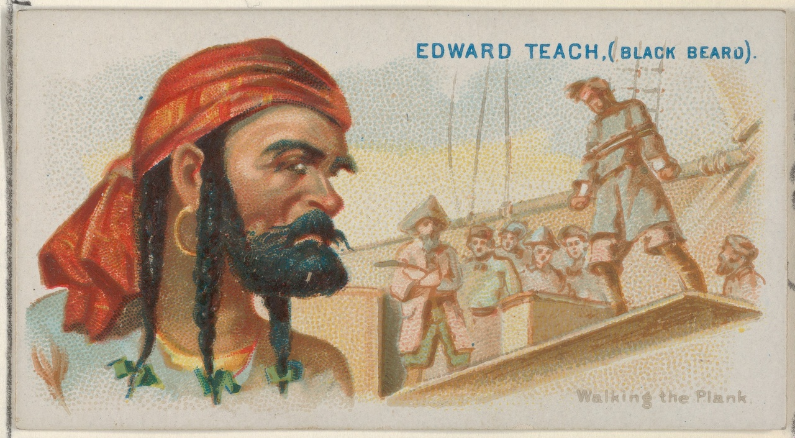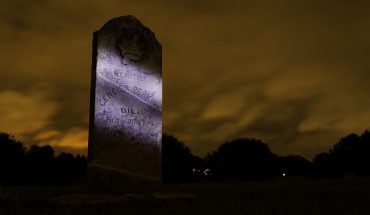Think you know all about North Carolina’s most famous pirate? Think again.
by Addie Ladner

After years of his own research, North Carolina historian Kevin Duffus believes that many stories about Blackbeard, our state’s most famous pirate, are exaggerated. Here’s what he’s disproven.
Blackbeard had superhuman strength
Historians and writers have referred to Blackbeard as “the most ferocious pirate of his time,” “a swaggering, merciless brute” with “inhuman strength.” But in the documents Duffus found recounting the final battle at Ocracoke — when Blackbeard and nine pirates engaged the Royal Navy sailors — every pirate was killed and none of the king’s men died. “Two months earlier, when Blackbeard got into a tussle with a Pamlico planter in a boat, he had to call for help because his opponent was getting the better of him,” says Duffus. That leads him to believe that Blackbeard was certain- ly not superhuman, and not much of a fighter, either.
Blackbeard lit his beard on fire as a scare tactic
There may have been smoke, but
it wasn’t meant to inspire fear in humans. Mosquitoes were very bad around the coastal waters, and Duffus says it’s possible that Blackbeard stuck slow-burning fuses under his hat to keep the pests away. He guesses that likely started as a joke around the campfire and grew into a legend. “It is entirely illogical and impractical that lighted matches, or slow-burning fuses, would have frightened anyone, except Blackbeard himself — he could have set his own beard on fire,” says Duffus.
Blackbeard was cruel, even brutal
There are a lot of stories about how Blackbeard mistreated women, but Duffus says he’s found no evidence to support those claims. Yes, pirates were criminals, but most of them, like Blackbeard, were cordial and social — records show that he was even nice to ship captains. “I don’t know that Blackbeard ever harmed anyone until his final night at Oc- racoke,” says Duffus.
Blackbeard is famous because he was a successful pirate
Duffus says that Blackbeard was only a pirate for about two years — the thing that made him famous was his name. “It was unusual for anyone to have a nickname like that,” Duffus says. “Using this pirate alias, Blackbeard, can be compared to a French soldier’s nom de guerre, a means to prevent dishonor from falling on their family members.”
Blackbeard died in his late 30s or early 40s
This approximate age of Blackbeard’s death, Duffus says, came from Robert Lee’s 1974 biography of the pirate. It was based on the popular engraving made in 1724 by an artist in Oxford, England — but this artist never laid eyes on his subject. Based on his ex- amination of records, Duffus believes Blackbeard died around age 27. This makes sense, as it was the median age of pirates during the Great Age of Piracy in the late 1720s.
Blackbeard’s flag showed a spear and bleeding heart
The flag widely associated with Blackbeard, featuring a bleeding heart and a horned skeleton holding an hourglass and spear, never belonged to the pirate, says Duffus: “The evidence is irrefutable. It was not until the 1978 publication of THe Pirates of the Spanish Main, written by the English adventurer and TV presenter Douglas Scott Botting, that this flag was attributed to Blackbeard.”
He may, however, have had a black flag with a skull on it: Duffus’ research says that when Blackbeard detained the Mountserrat Merchant near Nevis in November 1717, the stern of his Queen Anne’s Revenge displayed a flag described in a deposition as a “Death Head.” Four months later, when Blackbeard’s flotilla of vessels captured the Protestant Caesar off Honduras, witnesses again described “Black Flags with Death Heads on them.”
___________
This article originally appeared in the July, 2022 issue of WALTER Magazine



